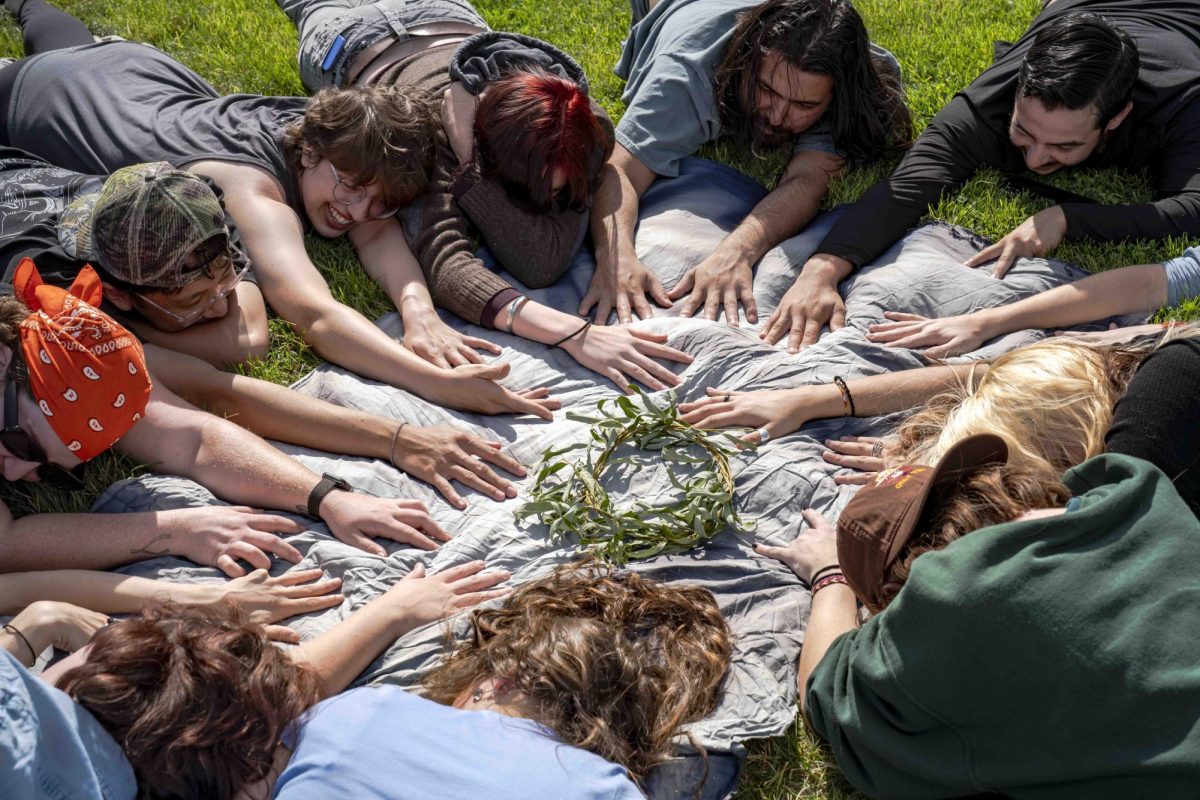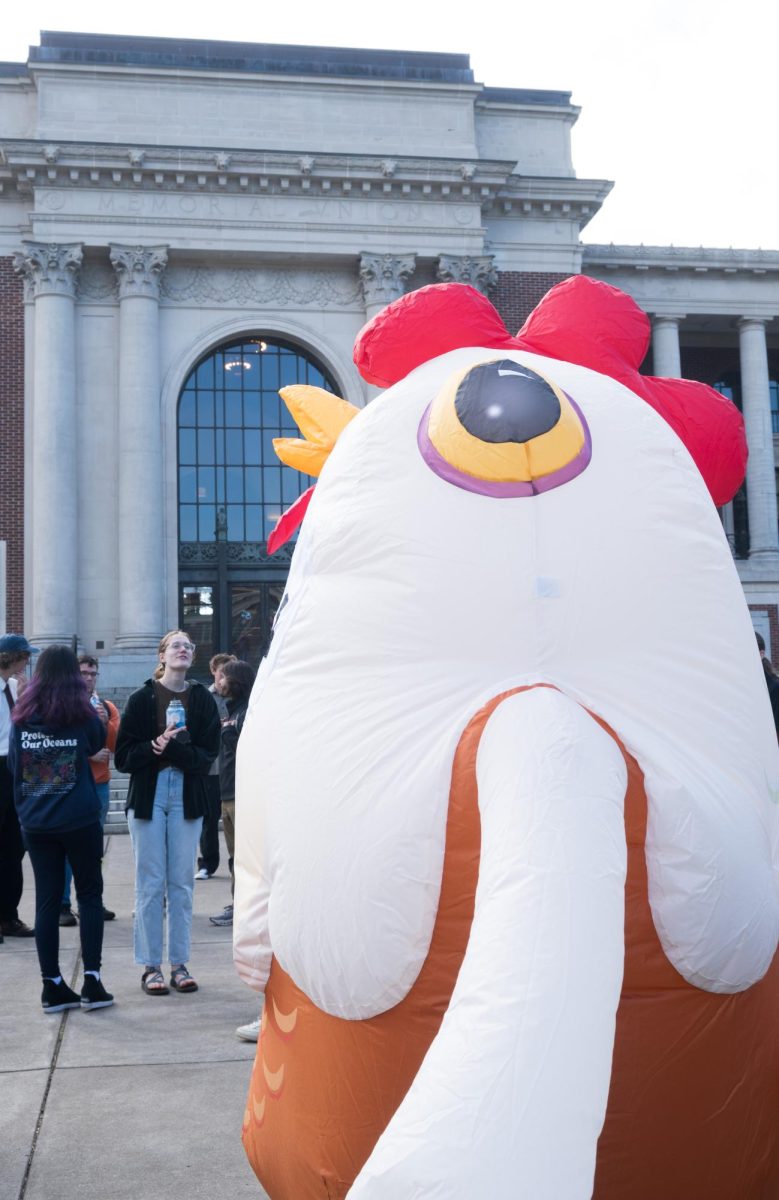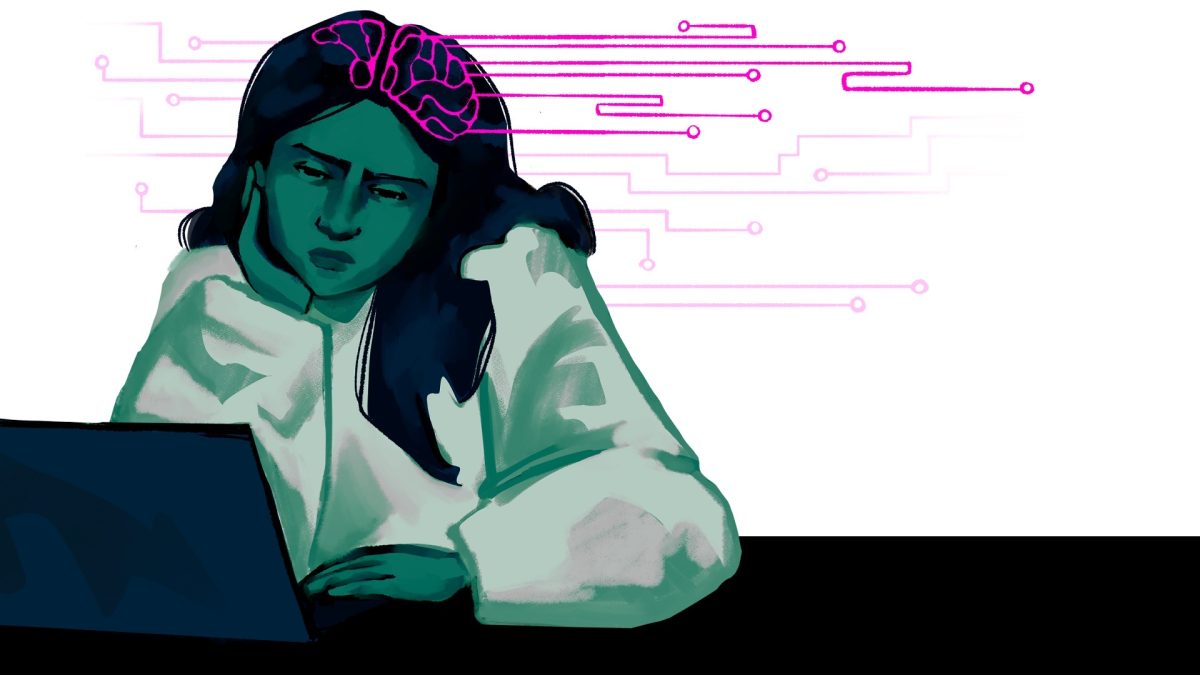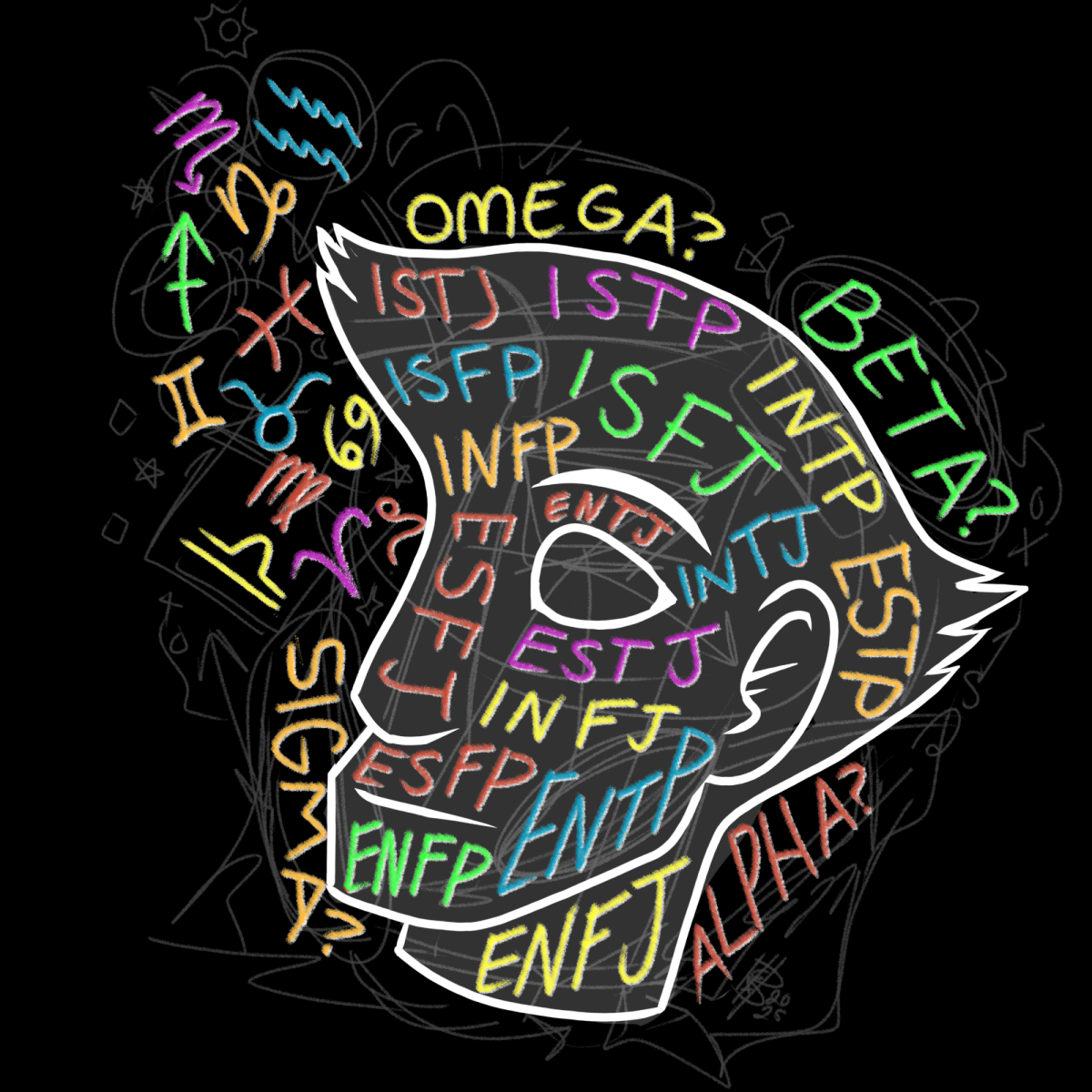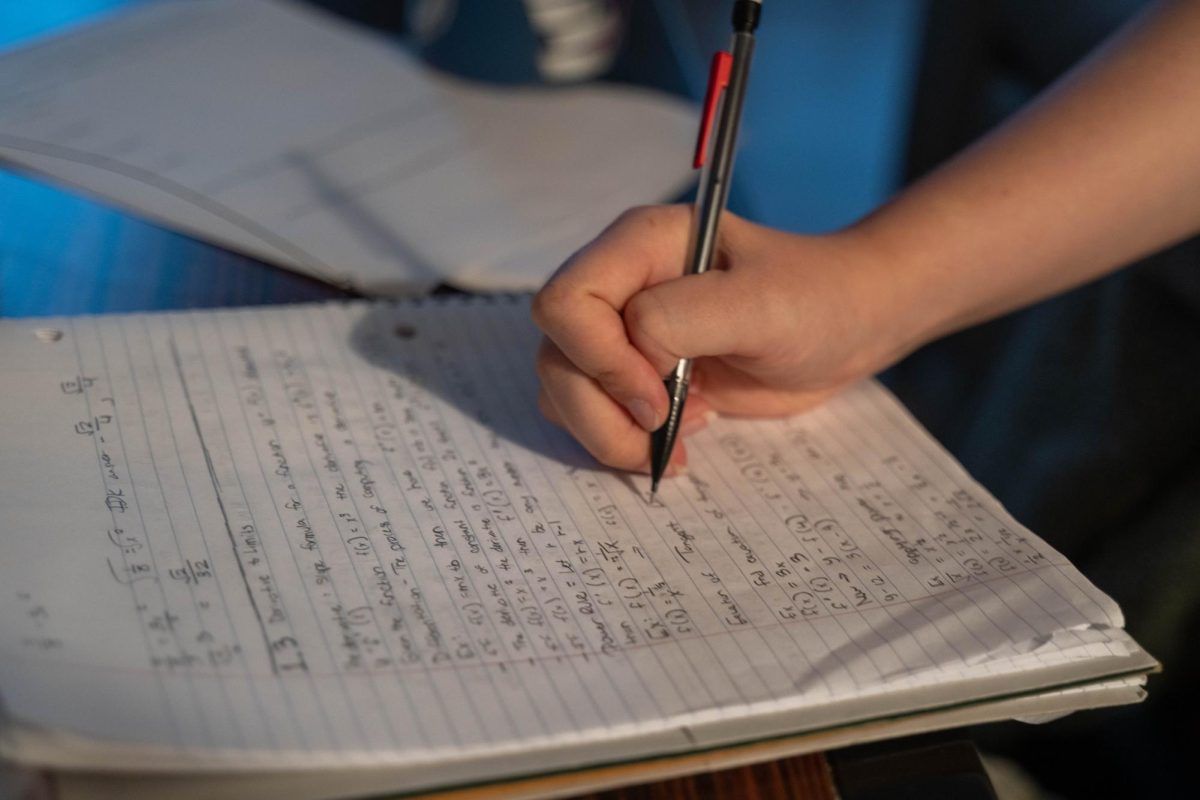SUMMER LAKE, Oregon
Editor’s Note: This photo essay opinion-piece does not represent the opinion of Beaver’s Digest but rather it reflects the personal opinions of the writer.
Editor’s Note (10/8/25): There were corrections made to a quotation to reiterate that the quote was from the correct source.
By the time we left the pines for the sage, and headed into the desert, heat pressed into the glass, the open sky, the way the lake flashes and then disappears. I’ve taken Oregon State University’s Creative Fieldwork course four times now; twice to Cape Perpetua and twice to Summer Lake.
Creative Fieldwork is a five-day, on-site intensive experimental research course at PLAYA, an arts-and-science residency campus on the northern edge of the Great Basin. Students from studio art, geology, liberal studies spent Sept. 17–22 traveling to Summer Lake, walking wildfire scars, visiting Lake Abert and Winter Rim, and ending with an open studio before the trip home.
“Science is one of the layers,” said Michael Boonstra, senior instructor II and sculpture coordinator, listing biology, geology and social sciences among the tools that help students “give clarity to what’s happening in a specific place.” Unlike a traditional studio class, he said, this one starts with the world outside.
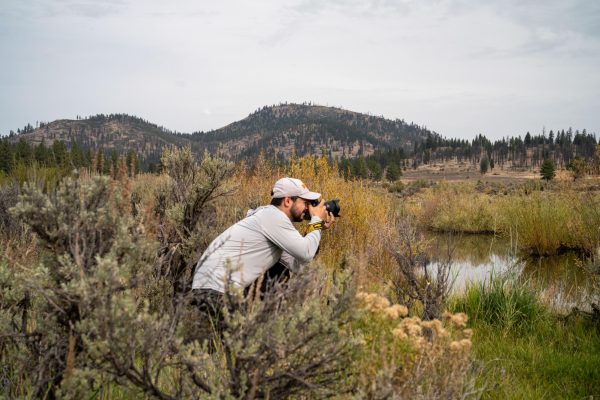
watershed in Lake County, Oregon, on Sept. 19, 2025. The stop was part of Oregon State
University’s five-day Creative Fieldwork course at PLAYA. (Brook Ferris)
“Scientists often have a thesis and then go out into the field to prove or disprove it. As artists, we start with an analysis of the place and hope that leads to a bigger body of work,” Boonstra said.
Andrew Myers, senior instructor of art and printmaking studio coordinator said, “If we’re thinking about the name of the course, Creative Fieldwork, it overlaps the way an artist works and with how a scientist works. It helps students develop that research practice.”
I spent the first afternoon studying pitted rocks near the cabins and asked our geology major, Nicolette Eusebi, what made all the holes. She said they were volcanic rocks. The holes had been caused by air bubbles trapped in cooling lava that later burst.
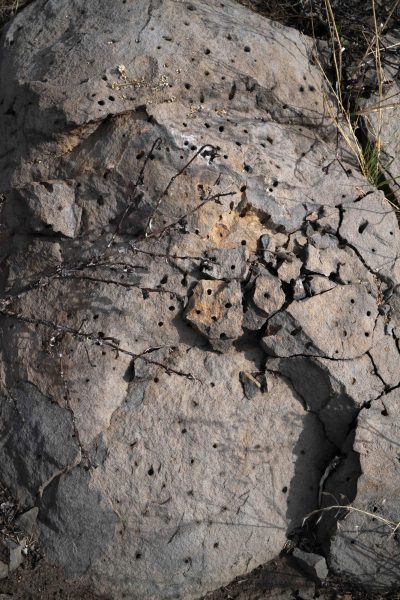
Summer Lake, Oregon, on Sept. 19, 2025. Geology major Nicolette Eusebi identified the
texture for classmates during Oregon State University’s five-day Creative Fieldwork
course. (Brook Ferris)
“The state is the classroom,” Boonstra said, explaining how Creative Fieldwork extends studio practice. He and Myers consult with local experts ahead of time and build an itinerary that makes those ideas legible on site.
“Creative Fieldwork overlaps the way an artist works with how a scientist works,” Myers said. “It helps students develop a research practice and the concept of what they want to make work about.”
Boonstra said they start with place: “How do we start to understand a place?”—and layer in biology, geology and history before anyone commits to a form. Mornings mean field observation; afternoons, translation in the studio; evenings are for reflective discussions over dinner.
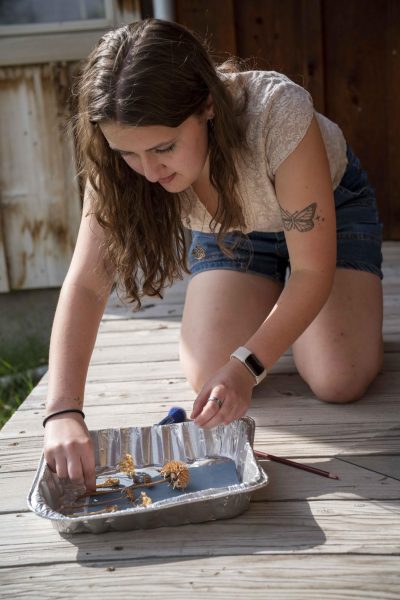
prepares a cyanotype for sun exposure outside a studio at PLAYA in Summer Lake,
Oregon, on Sept. 18, 2025. The process session was part of Oregon State University’s
five-day Creative Fieldwork course. (Brook Ferris)
Carter Shearer, a graduating studio art major on his fourth Creative Fieldwork, said the course gave him a way back into making. “I struggle to motivate myself on my own, so having other creative people around doing art with you is super helpful,” Shearer said.
He usually paints and sculpts, but at PLAYA he travels light: pens, a watercolor set, a camera he hadn’t touched in four years. “I’ve been really stuck creatively, so this has been a nice reset,” he said. “Picking up the camera has forced me to see things differently and get the creativity flowing.”
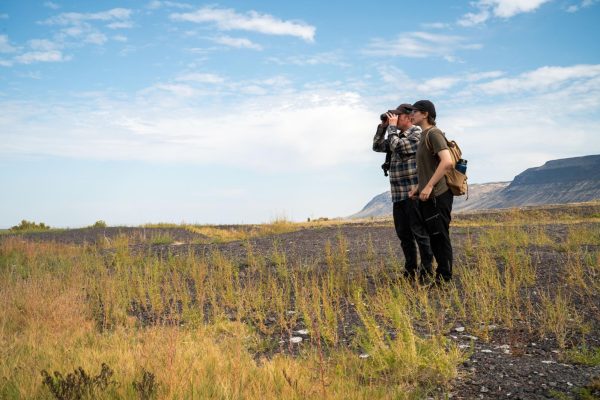
student Celeste Anderle watch birds through binoculars at Lake Abert in Lake County,
Oregon, on Sept. 20, 2025. The shallow, alkaline lake is a key stop on the Pacific Flyway
for migratory birds. (Brook Ferris)
“I didn’t expect to enjoy writing on these trips as much as I do,” he said. And the course structure helps. “I tend to need a lot of instructions, but I feel like this class has the perfect balance of freedom and instruction.” I found myself writing more than usual as well, reflecting the sunrises and sunsets of each day.
That balance is by design. “Afternoons are studio time, but studio here isn’t like studio on campus,” Boonstra said.
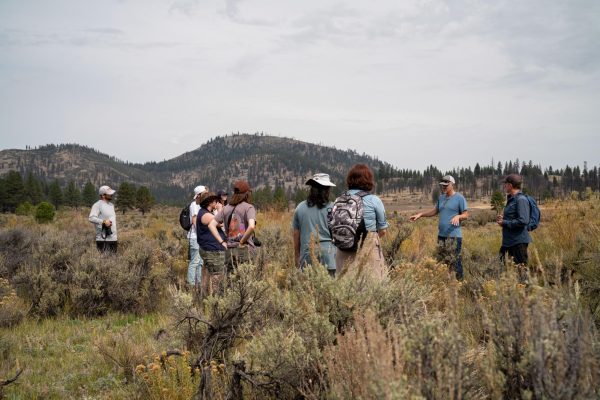
at a beaver dam in the Chewaucan watershed in Lake County, Oregon, on Sept. 19, 2025.
The stop was part of Oregon State University’s five-day Creative Fieldwork course at
PLAYA. (Brook Ferris)
“We try to tell students to think about the best way to talk about the subject. For example, sound-record a place rather than drawing it,” Myers said. The space chooses the medium.
Chloe Bartlett, a senior in liberal studies focused on social services and social justice, said she signed up “looking for an outlet of joy” after a hard stretch with depression.
When I asked what she hoped to explore in the area, she pointed to Indigenous history. “Especially in Lake County, where there’s no land designated to Indigenous communities, along with water, wildfire and rural food access,” she explained. The course, she said, also helped her loosen perfectionism: “Being able to get back to my artistic roots has brought so much joy to my life.”
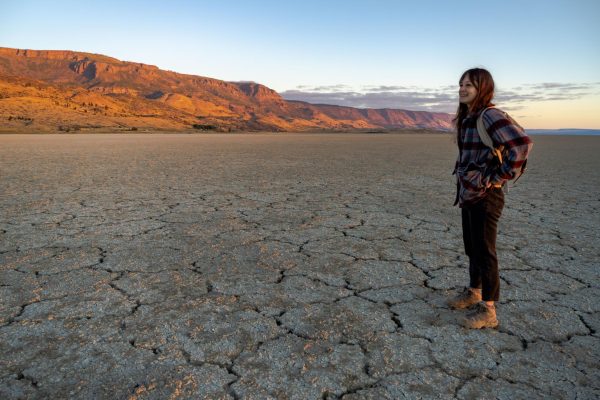
PLAYA in Summer Lake, Oregon, on Sept. 22, 2025. The sunrise walk preceded a studio
day at PLAYA in Oregon State University’s five-day Creative Fieldwork course. (Brook Ferris)
Nicolette Eusebi, a fourth-year geology major with a photography minor, took Creative Fieldwork this year for the first time because PLAYA sits in a geologist’s dream. “As a geology major, I thought it was a good blend between science and art,” she said. As we traveled to different sites of the area, she identified rocks on the fly; in the studio she chased textures, then adjusted to shooting manual on the open playa. “Being around other creatives,” she said, “I’ve been learning a lot about different creative expressions that I never would have thought about.”
Cell service exists, which can make it harder to ignore. “After 24 hours they realize that having it is more of an issue than not having it,” Boonstra said. In contrast, the remoteness asks students to reset their clocks. “Time becomes very important,” Myers said. “We talk about slowing down and being in the space a lot.”
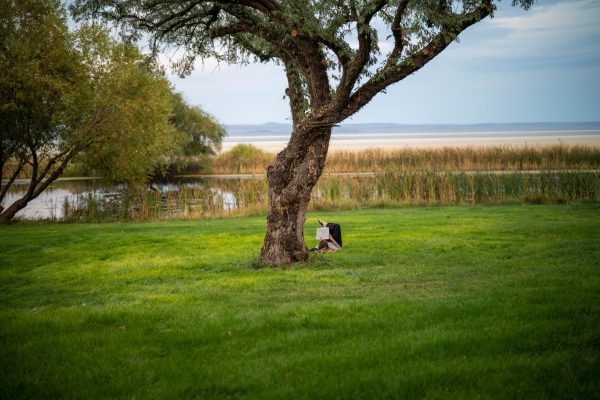
tree on the PLAYA campus near Summer Lake, Oregon, on Sept. 18, 2025. The playa
stretches behind her during Oregon State University’s five-day Creative Fieldwork
course. (Brook Ferris)
What students take back varies. Shearer said PLAYA clarified what a creative practice might look like after graduation. “It’s shown me what the options are and what a real artist residency really looks like,” he said. Eusebi expects to carry field habits into future geology research. Bartlett hopes to keep making art for joy and community.
“Some of our students aren’t art majors,” Boonstra said, “but regardless, 20 years from now if I could ask them if they remember being a half mile out on the playa, I think they’d say yes.” He hesitates to call the class a retreat.
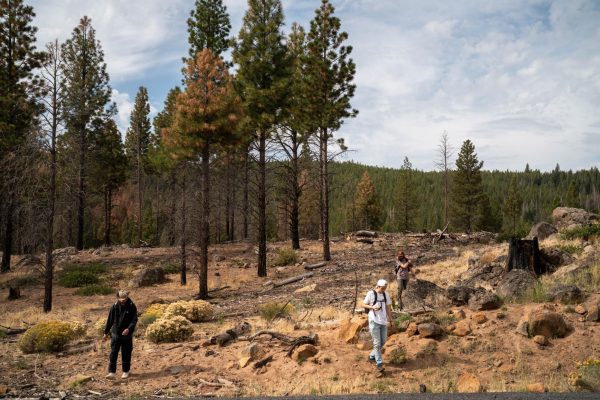
area in the Chewaucan watershed in Lake County, Oregon, on Sept. 19, 2025, during
Oregon State University’s five-day Creative Fieldwork course at PLAYA. The site burned in
wildfires in 2020 and 2021. (Brook Ferris)
That’s also why the course mirrors the state. “The biggest catalyst was, what does it mean to be a creative at a land-grant institution?” Boonstra said. “Our mandate is that the state is the classroom.”
In practice, that means PLAYA one term and Cape Perpetua another; wildfire and water here, marine protected areas on the coast; a portfolio that looks less like a finished product and more like a working archive of questions, tests and first drafts.
I had my own small first drafts this week that included a handful of photographs, some field notes, a test cyanotype print that finally cleared the yellow cast I’d been fighting, and some watercolored infrared maps of wildfires that have affected the area throughout the past. But the part I’ll keep is simpler: standing with classmates at sunrise, listening to how quiet can feel heavy, and learning again that creative work isn’t only about the object. It’s about how you arrive at it, and where.
If you want the short version of why this course matters, Myers already wrote it on the board in a way when he said: “its learning how to connect with a specific place.” The longer version is five days long, smells like sagebrush, and ends with students who are better at slowing down, observing, and asking questions than when they arrived — which is exactly the point.
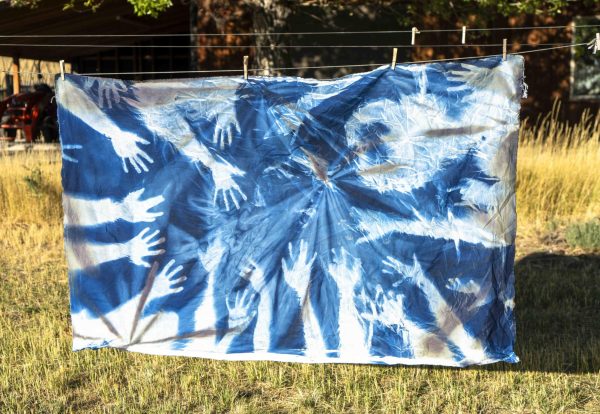
21, 2025. Oregon State University students created the sun-exposed fabric during a
group activity led by Brook Ferris for the five-day Creative Fieldwork course. (Brook Ferris)

